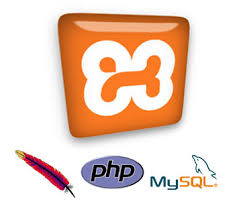What is XAMPP?
XAMPP stand for cross-platform, Apache, MySQL, PHP and Perl. It’s a
simple and lightweight solution that allows you to create a local web
server for testing purposes.
Since XAMPP is cross-platform, it also works on Mac and LInux, but today we’re going to look at setting up XAMPP on Windows 7.
Installing XAMPP
Go to the Apache Friends website and download XAMPP.
The XAMPP file is 125MB. Once downloaded, launch the installer.
You may receive warnings about installing the software on your
computer. As you would when installing any software on Windows, use your
best judgment.
The XAMPP setup wizard will guide you through the installation.
In the next window you will be asked to select which components of
the software you would like to install and which one you don’t want.
Some options, such as Apache and PHP are greyed out because they are
essential to running the software.
It’s up to you which components you want and don’t want. Since I we
want to run WordPress on this localhost, I’ll leave MySQL and phpMyAdmin
checked and uncheck the remaining options.
Next, select the folder where you would like to install XAMPP. I’m going to create a new folder in C:Program FilesXAMPP.
In the next window you’ll be asked whether you would like to install
Bitnami for XAMPP, which offers free tools for installing WordPress,
Drupal and Joomla! on top of XAMPP. We’re going to install WordPress
manually and without this promotional program, so untick “Learn more
about Bitnami for XAMPP” and click “Next.”
After going through all those options, XAMPP is now ready to install.
Once installed, you’ll be asked whether you would like to start the Control Panel. Leave this option ticked and click “Finish.”
If you receive any security/firewall warnings during the installation
process (such as the one below), make sure you check “Private networks,
such as my home or work network” and click “Allow access.” This is very
important. If you don’t allow access, XAMPP won’t work.
If you left “Do you want to start the Control Panel now?” checked
during installation, the Control Panel will automatically open. If not,
go to the XAMPP folder on you computer and open “XAMPP Control Panel”.
Start up both Apache and MySQL. If you have installed XAMPP properly,
both components should run fine without any errors, however, if there
are any other applications on your computer using the same ports as
these modules then you need to quit the conflicting applications using
the same ports and restart XAMPP.
You can check if your new local server is installed by visiting http://localhost in your browser.












ConversionConversion EmoticonEmoticon